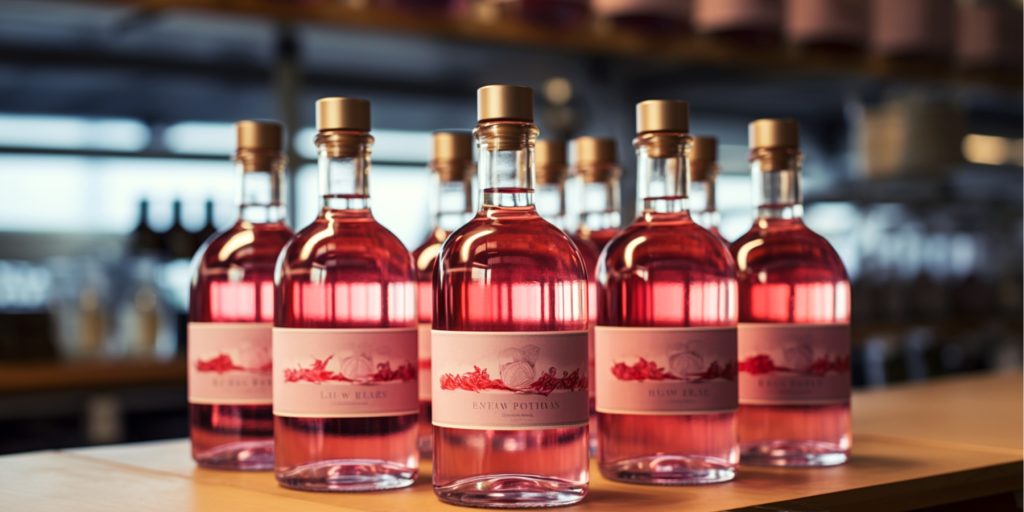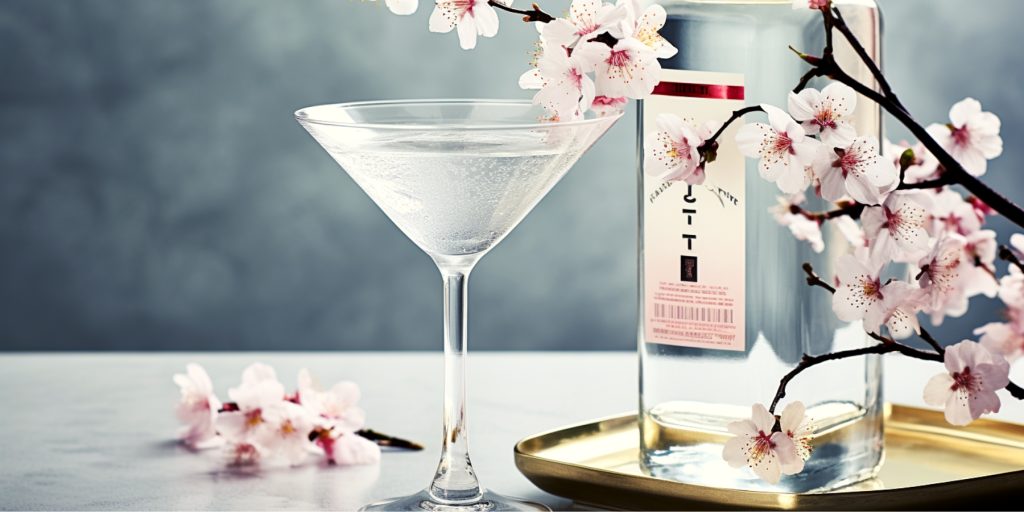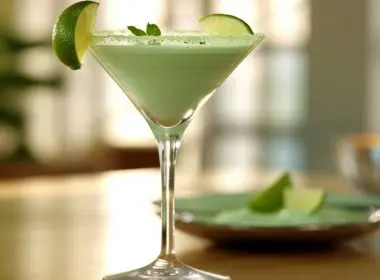Best Gin for a Classic, Dry or Dirty Martini
Jump to:
Choosing the best gin for a Martini is the secret to crafting this sophisticated and timeless cocktail. The Classic Martini, known for its elegance and simplicity, has charmed cocktail lovers for decades. While there are a few variations to explore, the choice of gin is what truly makes or breaks the experience, setting the stage for a perfect sip every time. We’ve got all the tips to help you find the gin that suits your taste and style.
How to choose a gin for a Martini

So, you’ve decided to indulge in the timeless allure of a Classic Martini—that sophisticated symphony of gin and vermouth. But wait, there’s more to it than just grabbing any old gin off the shelf.
Choosing the right gin is like selecting the perfect partner for a dance; it sets the mood, defines the experience, and can elevate your Martini from good to unforgettable. Here are a few friendly tips to consider when navigating the gin aisle for your Martini masterpiece.
Type matters
The first step is knowing your gin types. London dry gin is the classic choice, with juniper-forward botanicals that dance harmoniously with vermouth. For a floral twist, rose gin brings delicate aromas to the party. Japanese gin often features unique botanicals like cherry blossoms for an exotic touch. Plymouth gin, with its slightly sweeter profile, adds depth to your Martini. If you’re seeking something contemporary, explore dry gins or New American styles, each with their own flavour twists.
Read next: What is Gin Made From: The Ori(gin) Story & More
Embrace the flavour
The essence of a Martini lies in its flavours. Consider the gin’s primary botanicals – juniper, coriander, citrus, herbs, and more. A well-balanced gin will shine through in your Martini, so take a sip to gauge how these flavours interact with your palate. Is it in harmony or do any flavours overpower the others? If they do, adjust and taste again.
All the Martin magic: 22 Types of Martinis You Should Know
Inhale the aroma
Aroma is like the opening act of your Martini experience. When you take a whiff, does the gin offer a bouquet of botanicals that entices you? Juniper, citrus, and spices are typical notes in gin aromas. And that’s what you want, because a gin with a captivating aroma can elevate the anticipation of that first sip.
Seek balance above all else
The perfect Martini is all about balance. Your gin should work hand-in-hand with the vermouth, creating a harmonious symphony of flavours. Look for a gin that complements the vermouth rather than overpowering it. An overly strong gin might drown out the vermouth’s subtleties, while a too mild one could get lost in the mix.
Gin inspiration for all seasons: Summer | Winter | Christmas
What about Dry and Dirty Martinis?

A Dry Martini relies on the simplicity of gin and vermouth, allowing the spirits to take center stage. As such, the aromatic quality of your gin should shine through without overwhelming the fortified wine component. It’s typically best to use a gin with a delicate yet expressive aroma that invites you in with hints of juniper and citrus. This balanced aroma is the prelude to a Dry Martini experience that’s nothing short of delightful.
In a Dirty Martini, the gin’s flavours play a dynamic role alongside the brininess of the olives. Choose a gin that boasts bold botanicals that can stand up to the olive’s assertiveness, yet still maintain a balanced profile. A London dry gin with herbal and earthy undertones can work exceptionally well, ending with a touch of spice to complement the briny twist.
Learn more: Everything You Need to Know About Vermouth
London dry gin

London dry gin stands as a symbol of gin craftsmanship with a rich history in mixology. Despite its name, it doesn’t need to originate from London to capture the essence of traditional gin-making. Made through a meticulous distillation process, London dry gin is acclaimed for its juniper-forward flavour, well-balanced blend of botanicals, and the unique touch it imparts to a Martini.
When used in a Martini, London dry gin creates a harmonious interplay of flavours. The juniper notes take the lead, delivering an herbaceous quality that melds smoothly with vermouth. The outcome is a Martini that boasts a timeless, intricate aroma, combining the botanicals’ fragrant elements with the subtle hints of vermouth. Its clear appearance and velvety texture lend a touch of elegance to the Martini’s visual and olfactory appeal.
Rose gin

Rose gin, also known as pink gin, brings a distinctive twist to the classic Martini. Infused with the delicate and floral essence of roses, this gin variation introduces a new dimension of flavour, texture, and appearance to your cocktail experience.
When used in a Martini, rose gin offers a subtle yet captivating floral note that complements the traditional herbal profile. The result is a Martini with a nuanced aroma and a touch of elegance that adds depth to the familiar juniper character.
Apart from its flavour, rose gin also affects the cocktail’s texture and look. The gin’s infusion of floral elements adds a soft and aromatic dimension to the Martini’s feel on the palate. Visually, the addition of rose gin might impart a gentle pinkish hue to the cocktail, enhancing its visual appeal.
Fun facts: Fabulously Fragrant: What Are Botanicals?
Japanese gin

For those seeking a Martini experience that balances tradition with innovation, Japanese gin provides a harmonious fusion of both worlds. Infused with the precision and subtlety characteristic of Japanese culture, this singular spirit variation puts a unique spin on the classic cocktail.
When used in a Martini, Japanese gin adds a delicate bouquet of botanicals that frequently draws inspiration from regional flavours. This lends a gentle complexity to the cocktail’s flavour profile, enhancing the traditional juniper base with nuanced herbal and citrus notes.
The impact of Japanese gin also extends beyond flavour. Its careful distillation process often results in a smoother texture, offering a velvety feel on the palate. While the colour of the Martini remains clear, the incorporation of Japanese gin introduces a subtle shift in the cocktail’s aromatic profile.
Explore the East: Shochu Cocktails | Sake Cocktails
Plymouth gin

Known for its slightly sweeter and earthier notes when compared to London dry gin, Plymouth gin originally hails from the historic naval town of Plymouth in England. This interesting spirit typically yields a Martini with a more approachable taste profile, which is ideal for those trying a Martini for the first time.
Beyond flavour, Plymouth gin also influences texture and appearance. Its smoother and fuller-bodied nature contributes to a luxurious mouthfeel, enhancing the overall drinking experience. While the Martini retains its classic clear hue, the use of Plymouth gin might subtly influence the cocktail’s aromatic presence.
Be in the know: What to Mix with Gin (The Best Gin Mixers in 2023)
Dry gin

Dry gin, which differs quite a bit from London dry gin, offers a crisp and versatile option for your Martini. Unlike London dry, which is subjected to strict manufacturing regulations, dry gin allows for more creative interpretation in its botanical selection and production methods.
Texture-wise, dry gin often lends a lighter and more delicate mouthfeel to the Martini. Visually, the cocktail retains its traditional clear appearance, letting the gin’s essence shine through in its purest form. So, whether you’re a Martini traditionalist seeking a novel experience, or a cocktail enthusiast interested in exploring different flavour dimensions, dry gin presents a canvas to customise your Martini adventure while preserving the cocktail’s timeless appeal.
New American gin

New American gin is yet another contemporary spin on the traditional spirit. This gin style deviates from the juniper-heavy tradition, embracing a diverse array of botanicals and creative approaches to production.
Using New American gin in a Martini will typically yield an intriguing departure from the classic formula. This type of spirit’s expansive botanical palette can result in a flavour profile that ranges from floral and citrusy to spicy and herbal. This variety invites a dynamic play of flavours, making each sip an exploration of modern taste dimensions.
Texture-wise, New American gin often carries a smoother and more approachable mouthfeel, contributing to a well-rounded cocktail experience. While the cocktail’s clear appearance remains intact, the use of New American gin will almost always add a contemporary twist to the Martini’s aromatic composition.
Modern gins for creative Martini variations

If you’re feeling adventurous and want to shake things up beyond the classic, modern gins offer an exciting twist for your Martini creations. With unique botanicals and innovative infusions, these gins open up a world of possibilities, allowing you to personalise your cocktail to match your mood and style. Here are some contemporary options that bring a fresh perspective to the traditional Martini.
- Infused gin: Infused gins are a fantastic way to add layers of flavour to your Martini. Think cucumber-infused varieties that lend a cool, crisp note or elderflower-infused gins that add a touch of floral sweetness. Peppercorn-infused gins can even bring a hint of spice for those who enjoy a bold, dynamic twist. These gins are perfect for creating a Martini that stands out with a unique and aromatic flair.
- Non-alcoholic gin: Who says you need ABV to enjoy a delicious Martini? Non-alcoholic gins have come a long way, providing all the botanical complexity without the booze. Whether you’re opting for a crisp, juniper-forward option or one with a delicate blend of citrus and herbs, non-alcoholic gins let you savor the flavours of a Martini while keeping it nice and light. It’s a great way to enjoy the ritual of cocktail-making without the kick!
- Floral gin: For a Martini that feels like a walk through a blooming garden, floral gins are the way to go. These gins often include botanicals like lavender, chamomile, or hibiscus, adding an elegant and aromatic touch to your drink. The delicate floral notes create a Martini experience that’s both fragrant and sophisticated, perfect for sipping in the springtime or whenever you’re in the mood for something light and breezy.
- Citrus gin: Citrus-infused gins are another great choice for creative Martini variations. These gins amplify bright, zesty flavours with botanicals like lemon, lime, or orange, adding a burst of sunshine to your glass. A citrus-forward gin can uplift your Martini with its lively and vibrant notes, making it an ideal option for a gorgeous twist on the classic cocktail. Whether you’re enjoying a sunny afternoon or hosting a summer soirée, a citrus gin Martini is sure to impress.
- Spiced gin: For a cosy, seasonal spin on the Martini, try using a spiced gin. These gins are crafted with botanicals like cinnamon, cardamom, or ginger, giving your cocktail a warm and aromatic profile. Perfect for autumn or winter sipping, a spiced gin Martini brings a festive touch to any occasion, blending classic Martini sophistication with a comforting, spicy twist.
Found this interesting? Check these out!

8 Best Gins for Negroni
The Dirty Martini Reimagined
9 Creative Espresso Martini Variations
Types of Gin: A Complete Guide to Different Gin Varieties
10 Gin and Pineapple Cocktails for a Tropical Vibe at Home
6 of the Best Gin and Aperol Cocktails to Sip this Summer
Vodka Martini vs Gin Martini: Which Should You Choose?
11 Fruity Martini Recipes to Add Some Colour to Your Next Party
Remember, there’s no one-size-fits-all approach to choosing a gin for your Martini. Personal preference plays a big role, so don’t hesitate to explore different options and experiment until you find the gin that resonates with your taste buds. Whether you’re a classic Martini enthusiast or a daring flavour explorer, the right gin can turn your cocktail journey into a memorable adventure.
So, cheers to the quest for the perfect Martini – a dance of flavours, aromas, and unforgettable moments. If you’d like more helpful info like this delivered straight to your inbox, sign up for our newsletter, and The Mixer will keep you in the know. Visit the Bulldog Gin website for some gorgeous cocktail recipes, and remember to tag us when you share pics of your Martinis on Instagram.












